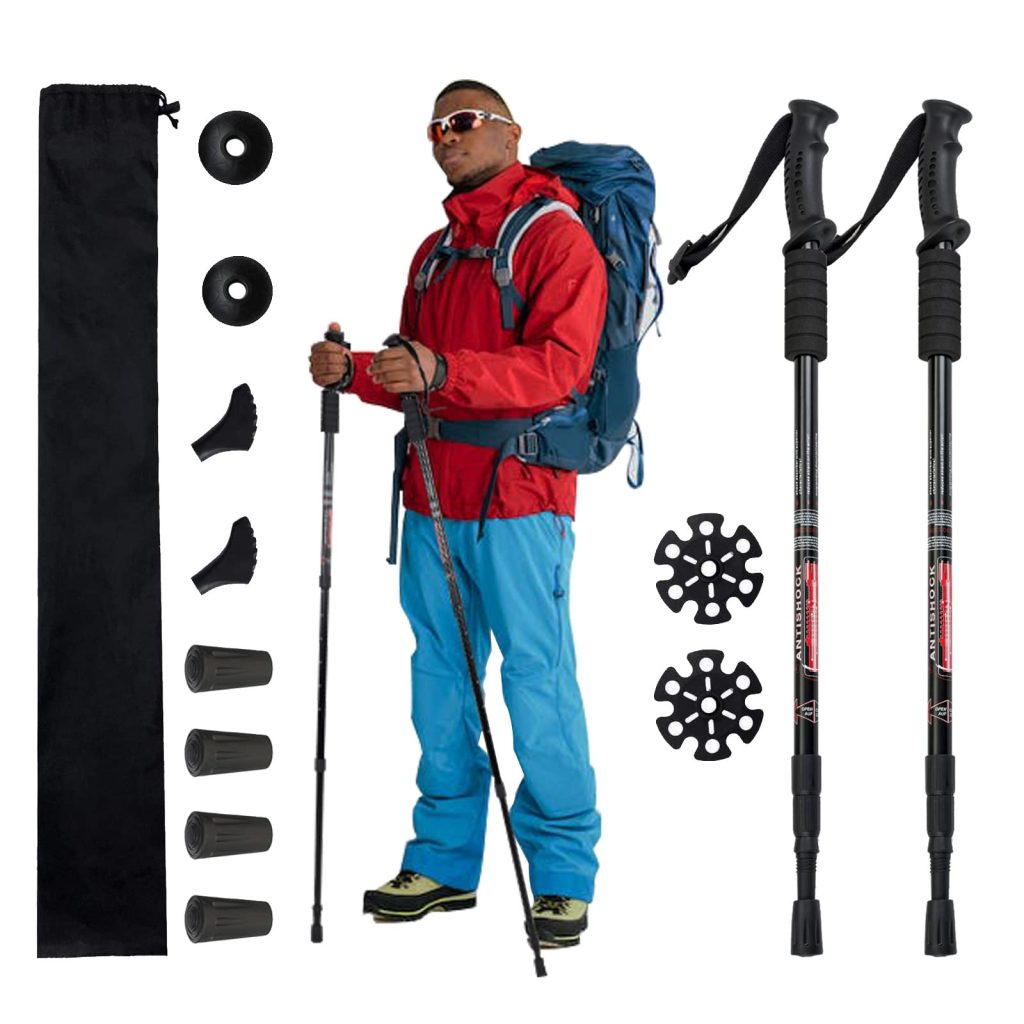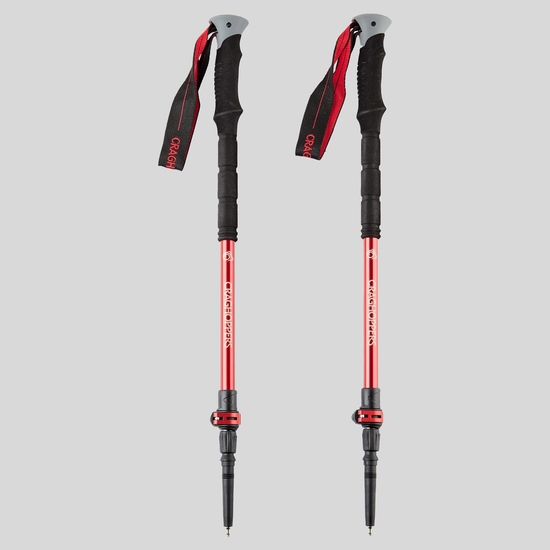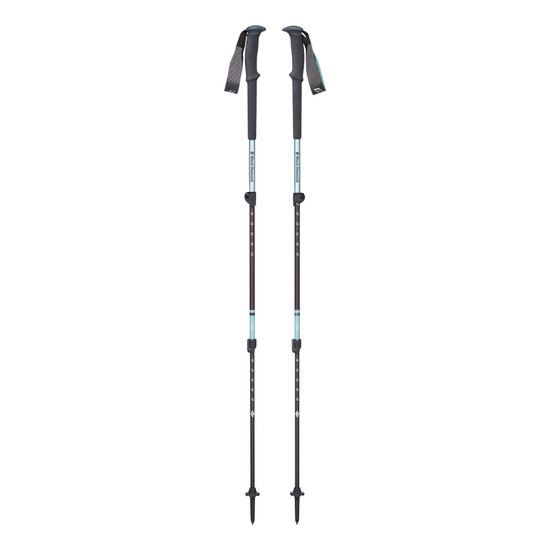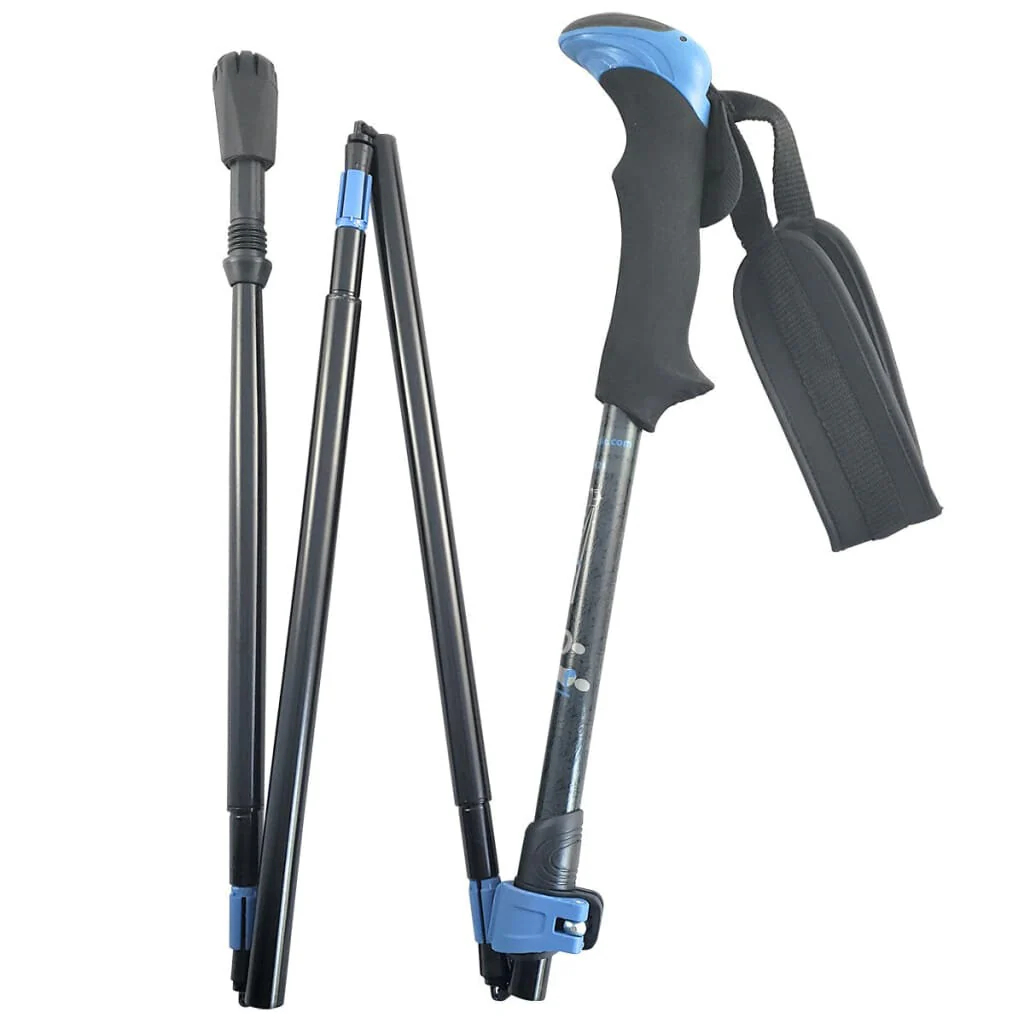Trekking poles have become essential gear for hikers, offering numerous benefits to enhance their outdoor adventures. In this article, we will explore the advantages of using trekking poles, including improved stability and balance, reduced impact on joints and muscles, increased hiking efficiency, versatility in various terrains, the potential health benefits, and tips for choosing and using trekking poles effectively.

I. Improved Stability and Balance: Tackling Challenging Terrains
1.1 Stability and Support on Uneven Ground:
Trekking poles provide hikers with added stability and support, especially on uneven or rocky terrain. By planting the poles firmly on the ground, hikers can distribute their weight more evenly and maintain balance, reducing the risk of slips, falls, and injuries. This increased stability is particularly valuable during steep ascents or descents, when maintaining traction is crucial.
1.2 Assistance Across Water Crossings and Fording Streams:
When encountering water crossings or having to ford streams, trekking poles can be invaluable. They help distribute body weight, providing stability on slippery surfaces and acting as an additional point of contact with the ground. Hikers can confidently navigate across rocks or through flowing water, reducing the chances of slipping or getting wet.

II. Reduced Impact on Joints and Muscles: Minimizing Strain and Fatigue
2.1 Easing Pressure on Knees and Ankles:
One of the significant benefits of using trekking poles is their ability to ease pressure on the knees and ankles. With each step, the poles absorb a portion of the impact, reducing stress on these vulnerable joints. This redistribution of weight helps to minimize strain and discomfort, making hiking a more enjoyable and sustainable activity. By alleviating pressure on the knees and ankles, trekking poles can prevent or reduce pain and potential injuries, allowing hikers to explore the great outdoors with greater ease and comfort.
2.2 Decreased Muscle Fatigue on Uphill Sections:
Trekking poles offer invaluable support during uphill climbs, particularly on steep and challenging terrains. As hikers ascend, these poles play a crucial role in muscle engagement and workload distribution. By pushing off the poles with each step, the upper body muscles, including the arms, shoulders, and core, are actively involved in the effort. This transfer of workload alleviates strain and fatigue in the leg muscles, allowing hikers to conserve energy and increase their endurance. The use of trekking poles on uphill sections can significantly enhance hiking performance and make even the most demanding ascents more manageable.
By reducing the strain on joints and minimizing muscle fatigue, trekking poles provide an overall more comfortable and efficient hiking experience. These benefits not only allow hikers to explore the outdoors with greater ease but also contribute to their long-term joint health and overall fitness. By incorporating trekking poles into their hiking routine, individuals can enjoy the beauty of nature while minimizing the physical toll on their bodies.

III. Increased Hiking Efficiency: Maintaining a Steady Pace
3.1 Enhanced Power and Momentum on Flat Terrain:
Trekking poles can enhance hiking efficiency on flat terrain by providing a rhythmic motion that helps maintain a steady pace. With each step, hikers use the pole’s resistance to propel themselves forward, maximizing their energy output and covering more ground with less effort. This increased efficiency allows for longer hikes and allows hikers to reach their destinations more quickly.
3.2 Descending with Control and Speed:
On downhill descents, trekking poles offer stability and aid in controlling speed. By planting the poles securely and leaning on them slightly, hikers can better control their descent and reduce the impact on their joints. This control allows for faster and safer descents, reducing the strain on the legs and minimizing the risk of slipping or falling.

IV. Versatility in Various Terrains: Adapting to Different Conditions
Trekking poles are versatile tools that adapt to a variety of terrains. They provide support and stability on rugged, uneven trails and muddy or slippery surfaces, allowing hikers to confidently navigate through challenging environments. The extra points of contact with the ground that trekking poles offer help distribute weight and maintain balance, even on the most demanding terrains.
4.2 Crossing Snowy or Icy Trails:
In snowy or icy conditions, trekking poles provide essential stability and aid hikers in maintaining traction. By digging the poles into the snow or ice, hikers can effectively test the stability of the surface before taking a step, reducing the risk of slipping and improving overall safety during winter hikes. Trekking poles equipped with snow baskets are particularly useful in deep snow, as they prevent the poles from sinking too deeply.
V. Potential Health Benefits: Beyond Hiking Support
5.1 Improved Posture and Spinal Alignment:
Using trekking poles encourages a more upright posture during hiking. This aligns the spine, reducing strain on the back and neck muscles, and promoting better overall posture. By keeping the body properly aligned, hikers can prevent discomfort, muscle fatigue, and potential long-term injuries.
5.2 Upper Body Workout and Increased Calorie Burn:
The use of trekking poles engages the muscles in the arms, shoulders, and core, providing an upper body workout while hiking. This additional muscle engagement leads to increased calorie burn during the hike, making it a more effective form of exercise. Regular use of trekking poles can contribute to overall fitness and help hikers achieve their fitness goals.
VI. Choosing and Using Trekking Poles: Tips for Success
6.1 Selecting the Right Trekking Poles:
Choosing the appropriate trekking poles involves considering factors such as weight, adjustability, grip, and durability. Hikers should also consider the type of terrain they’ll be encountering to determine the length and composition of the poles. Proper research and consulting with experts can help hikers make informed decisions when selecting their trekking poles.

6.2 Using Trekking Poles Effectively:
To achieve the maximum benefits from trekking poles, hikers should use them correctly. This includes adjusting the poles to the appropriate height, gripping them properly, and using the straps for added support and stability. Hikers should also practice the correct pole placement and stride rhythm to maintain a natural and efficient walking pattern.
Trekking poles are valuable tools that enhance the hiking experience by improving stability, reducing joint strain, increasing efficiency, and providing versatility across various terrains. They offer potential health benefits and can contribute to better posture and fitness. By selecting the right poles and using them effectively, hikers can maximize the advantages of trekking poles and enjoy safer, more enjoyable, and rewarding outdoor adventures.
